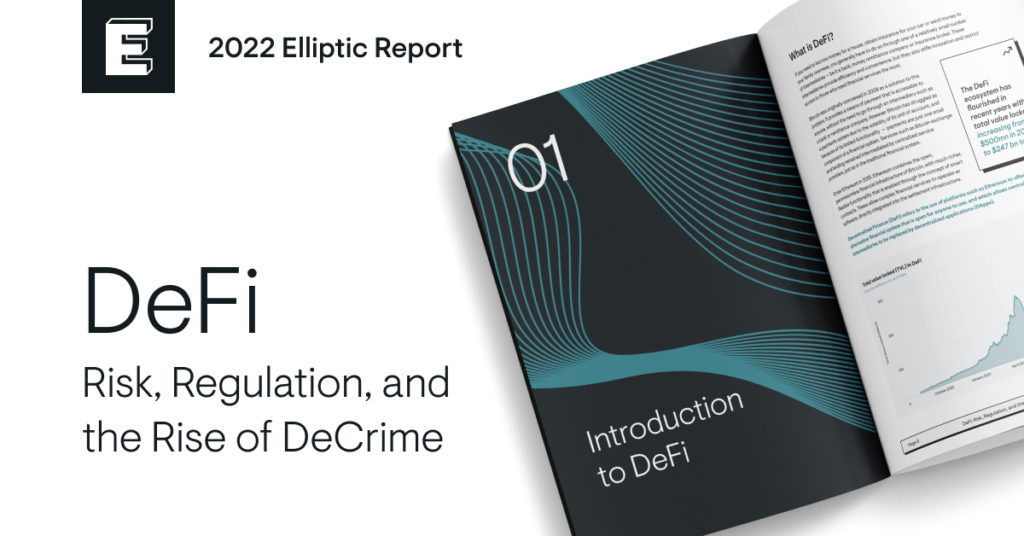Growth in the use of DeFi over the past two years has been staggering, the total capital locked in DeFi services has grown by over 1,700% to $247 billion in the past year alone.
The same openness and innovation that makes DeFi so powerful also brings with it new risks. The relative immaturity of the underlying technology has allowed hackers to steal users’ funds, while the deep pools of liquidity have allowed criminals to launder proceeds of crime such as ransomware and fraud. This is part of a broader trend in the exploitation of decentralised technologies for illicit purposes, which Elliptic refers to as DeCrime.
These losses are accelerating, with losses totaling $10.5 billion in 2021, up from $1.5 billion in 2020
As DeFi grows to become an increasingly significant part of our financial system the risks inherent in it will also impact traditional financial institutions. These risks can not be mitigated through industry abstention alone.
In this Elliptic report, we examine the concept of DeFi, what it actually ‘is’, as well as the associated risks, how DeFi is (or isn’t) regulated and potential DeFi financial crime compliance and controls.








Log in to access complimentary passes or discounts and access exclusive content as part of your membership. An auto-login link will be sent directly to your email.
We use an auto-login link to ensure optimum security for your members hub. Simply enter your professional work e-mail address into the input area and you’ll receive a link to directly access your account.
Instead of using passwords, we e-mail you a link to log in to the site. This allows us to automatically verify you and apply member benefits based on your e-mail domain name.
Please click the button below which relates to the issue you’re having.
Sometimes our e-mails end up in spam. Make sure to check your spam folder for e-mails from The Payments Association
Most modern e-mail clients now separate e-mails into different tabs. For example, Outlook has an “Other” tab, and Gmail has tabs for different types of e-mails, such as promotional.
For security reasons the link will expire after 60 minutes. Try submitting the login form again and wait a few seconds for the e-mail to arrive.
The link will only work one time – once it’s been clicked, the link won’t log you in again. Instead, you’ll need to go back to the login screen and generate a new link.
Make sure you’re clicking the link on the most recent e-mail that’s been sent to you. We recommend deleting the e-mail once you’ve clicked the link.
Some security systems will automatically click on links in e-mails to check for phishing, malware, viruses and other malicious threats. If these have been clicked, it won’t work when you try to click on the link.
For security reasons, e-mail address changes can only be complete by your Member Engagement Manager. Please contact the team directly for further help.